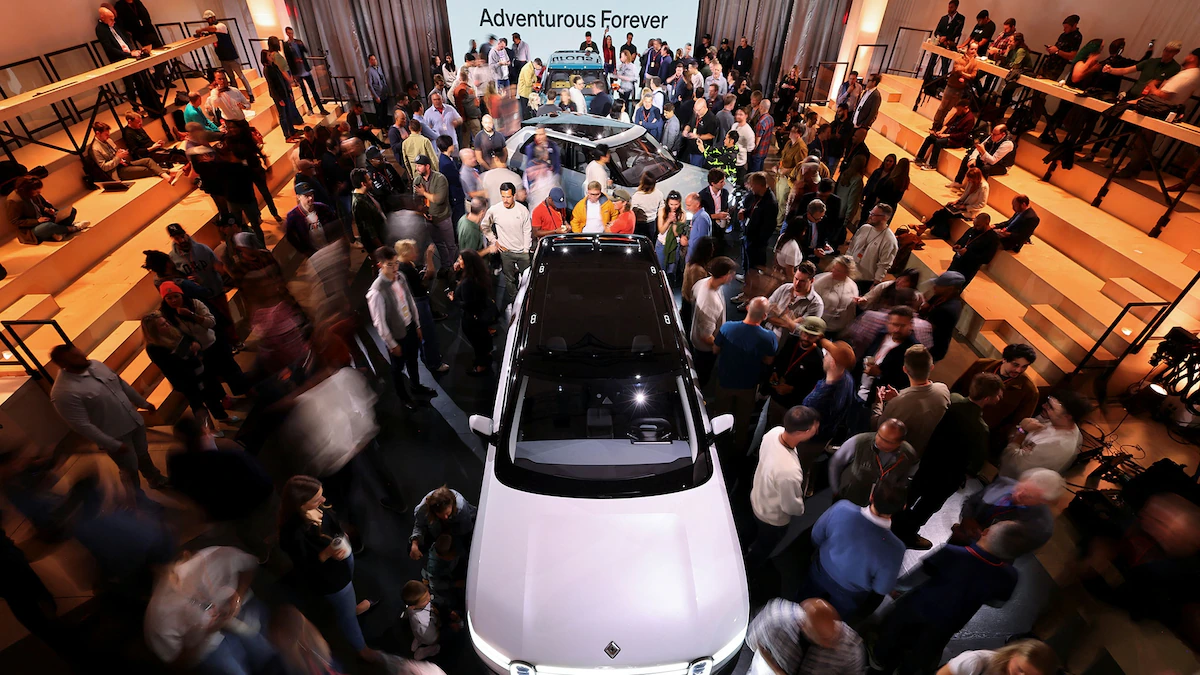
When I last shopped for a new car seven years ago, my primary focus was on style, size, and color. This time around, I had to learn a whole new lexicon: capacity, range, regenerative braking, level-two charging, and more. That’s because, for the first time, I was in the market for an electric vehicle (EV).
EV popularity has exploded in recent years, now comprising eight percent of new car purchases in the United States and more than 20 percent worldwide. Close to half of all car buyers in China are opting for electric; in Denmark, the world leader, it’s 63 percent.
In the U.S., however, a government program that offers a federal tax incentive for purchasing or leasing these new cars will end later this month, meaning the EV curious hoping to save money have a limited window to act. (Some states will continue their own incentives.)
Perhaps it’s no surprise, then, that when I recently went to an EV dealership to test drive one for myself, I was met with a long line of other prospective buyers.
My plan was to purchase an electric car to help the environment. But when I finally got behind the wheel, I learned they’re also fantastic to drive.
How driving an EV feels different from a traditional car
Alan Taub, director of the Electric Vehicle Center at the University of Michigan, who previously worked in global research and development at General Motors, says that drivability should be better marketed to prospective buyers. “We need to rebrand the selling point,” he says.
50% OFF
Starting at $17/yr
Taub argues that an EV offers a smoother ride and better performance than a traditional internal combustion car and “happens to also be good for the environment.”
That smoother ride is partially because installing the battery on the bottom allows the car to better hug the road. (It also reduces rollovers during accidents.) And since the battery provides immediate power to the gas pedal, EVs go from zero to 60 astonishingly fast, Taub says.
Drivers also put their foot on the brake less frequently, because electric (and hybrid) vehicles recycle otherwise wasted kinetic energy from slowing the car and return it to the battery as power, a process known as regenerative braking. Depending on the setting selected, the car can often be stopped without touching the brakes, dubbed one-pedal driving.
And for those once wary of electric cars, technological advances have largely vanquished concerns that an EV might run out of battery power on the road, a worry dubbed range anxiety. More than 50 EV models today go more than 300 miles per charge, with some topping 500. Plus, the number of public charging stations has doubled in the past five years; 64 percent of Americans now live within two miles of one. (That’s not the case for rural residents, where only 17 percent have easy access.)
(Has the electric car’s moment arrived at last?)
The purchase price of EVs, while still higher than their gas counterparts, continues to fall—and is expected to plummet in the coming years, with Ford announcing that its four-door electric pickup truck, planned for 2027, will start at $30,000. Right now, the average retail price for EVs is around $60,000, although some models can be had for much less.
Still, for all the interest and excitement, first-time buyers like me face a daunting learning curve for evaluating and buying an EV—and for navigating tax credits.
Are electric vehicles really better for the environment?
The science is clear that electric vehicles are far superior to internal combustion cars when it comes to both reducing planet-warming gases and keeping the air cleaner.
Transportation, including gas-powered cars, is responsible for roughly a third of the greenhouse gasses currently warming our planet. By the end of last year, there were 58 million electric cars on the road worldwide. Had those cars been gas-powered, they would have collectively burned a million barrels of oil per day, the International Energy Agency determined.
Even taking into account the environmental cost of manufacturing the car and its battery—and the electricity to power the car generated by high-polluting sources such as coal—greenhouse-gas emissions are substantially lower across the board for EVs, Taub calculated last year. An electric truck hauling a 2,000-pound load emits 30 percent less than a traditional truck hauling nothing.
EVs use their energy much more efficiently than gas cars, with some 90 percent of its power moving the car, compared to 25 percent for conventional vehicles, Yale University researchers have found. The loss of energy in the form of heat “is why you could fry an egg” on an internal combustion engine, says Stephen Porder, an ecologist at Brown University and author of Elemental, a book about building a more sustainable future.
Gas cars also have many more parts under the hood, making upkeep and repairs some 40 percent more costly per mile driven, according to the environmental think tank Atlas Public Policy. With no oil to change, EVs also require little routine maintenance.
I was also pleased to learn how my EV will improve air quality in my community. Conventional cars belch out numerous pollutants, including the small particulate matter and volatile organic compounds that are linked to respiratory and cardiovascular diseases. That doesn’t happen with an EV. “There’s not even a tailpipe,” Porder observes.
Advances in batteries have made a big difference
After I purchased my electric sedan, the next challenge was learning how to charge it. The car came with a cable resembling the one that powers my clothes dryer. But the salesman made clear that plugging in this 120-volt, “level one” charging cable requires more than a day to power the battery.
I decided to put a 220-volt, level-two charger in our home’s garage, which cuts the charging time to roughly seven overnight hours. (Some vehicles, especially luxury models, come with a cable used for both levels.) The local power company had offered to install a charger “free,” but the fine print showed they’d own the charger for the first ten years and would remove it for a hefty fee if we moved before then. I hired my own electrician instead.
Some EV owners can get a partial tax credit (not expiring until 2033) for the cost of the charger installation, based on the income level in the community. After an exhausting online search I discovered my census tract on a government website and cross-referenced it on an Internal Revenue Service site; I did not quality.
EVs can also be charged by the level-three superchargers (aka direct current fast charging, or DCFC) found in public settings. These juice up a car in 20 minutes to an hour and are essential for long-distance driving.
But experts say it’s better for the battery’s longevity to mostly charge at level-two speeds, which generates less heat and strain on the battery, and to juice it only to 80 percent as much as possible.
(Lithium batteries power your world. How much do you really know about them?)
Car companies are continuing to improve how much power batteries can hold and how long they last. It’s the most important component in an EV, says Micah Ziegler, who studies sustainable energy and chemical technologies and public policy at the Georgia Institute of Technology. And scientists are working on new designs that might stretch battery life infinitely longer.
In the meantime, I’m learning about all the factors that can decrease range between charges, like driving in cold temperatures, taking short trips in hot weather, using the air conditioner on high, and creating drag by keeping windows open on highways.
There’s a lot to learn. But it continues to be tons of fun. I’m especially looking forward to the lower cost of owning and maintaining my EV in the coming years—and to passing all those gas stations on the road and waving.



